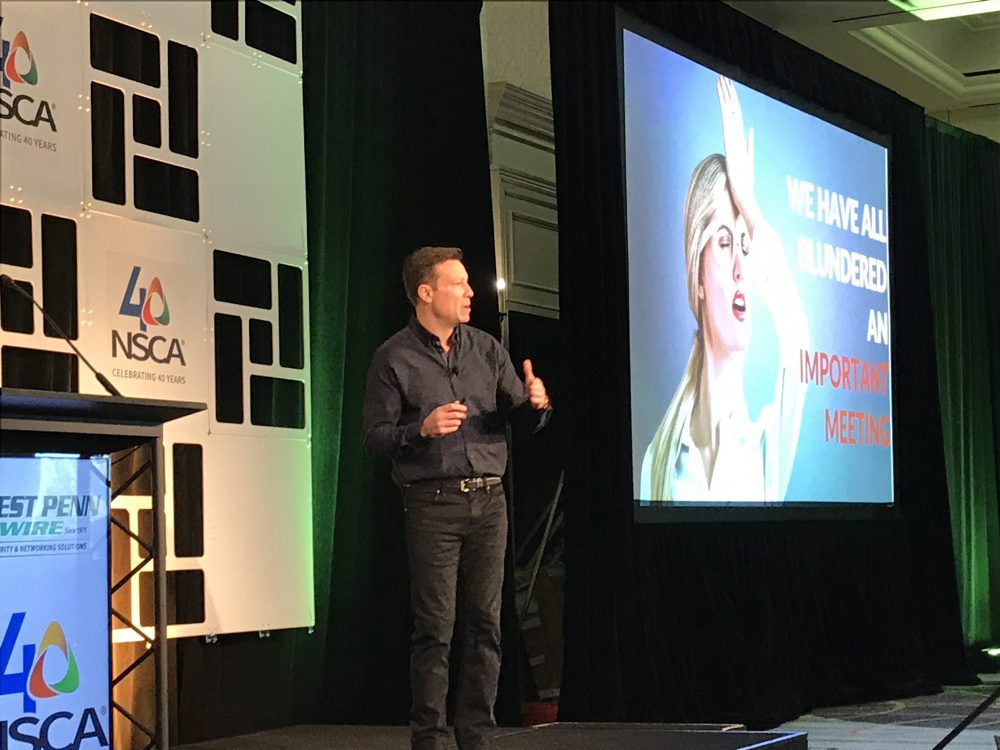Every company has an Ashwani, an employee who is essentially doing his or her job because he or she needs a paycheck, not because he or she actually likes the job or even the company. [related]
Companies that find the most effective ways to transform their employees from people who show up and work because they need money to live and pay their bills to passionate stakeholders are likely the ones that are going to find the most success, not only in improving culture but also boosting profits.
That takes moving from a hierarchy to a flat-team structure, said entrepreneur Ron Lovett during his keynote at the 22nd annual NSCA Business & Leadership Conference last week in Irving, Texas.
It also means trimming some middle management to eliminate bottlenecks and bureaucracy, he said.
“I started my company to be nimble,” said Lovett. Every business owner must ask if the company’s frontline staff is aligned with the overall vision and why customers want to do business with them, he said. That will help dictate the direction your business should be taking, if it’s not already doing it.
If you had to restart the AV integration industry from scratch today, said Lovett, “could I create a model that eliminates challenges and maintains profitability?” It all starts with the hiring process, he said, and employers should always start with the end in mind. In this case, it’s about cultural fit and specific roles.
Employers need to know how the so-called “A players” in the industry hear about their companies and make sure they’re offering those top performers something they can’t get elsewhere that’ll make them want to not only stick around but also recruit other top performers to join them, said Lovett.
Creating Passionate Stakeholders
Company leaders should also build what Lovett calls “a virtual bench” of people in the industry who would join the company if a job opened up or was created for them. When it comes to screening and interviews, be sure you have a “killer question” that will quickly weed out the people you don’t want.
Perhaps asking if someone is open to working overtime or can legally drive in the U.S. will save you a lot of time. You can also generate some intriguing answers—and perhaps creative solutions—by asking an interviewee how they would’ve solved a past problem in the company, or even advice on a current one.
Whatever you do, don’t think you’re done with what Lovett calls “on-boarding” when they’re finished signing all of their legal paperwork for HR. Integrating new employees into the company culture is about a lot more than that, he said.
“Start with your company’s story, then add its purpose and mission along with the core values and your brand promise,” said Lovett. “Most importantly, tell employees how they can participate in all of that.”
Lovett adds Community to Daniel Pink’s guidelines of purpose, mastery and autonomy as ways to get more employees engaged in what’s going on both inside the walls of their companies but outside of work hours too.
Companies can build a stronger community through forums with firm leaders, participation in regional groups and sharing best (and, yes, worst) practices. It can also come through social media, where employees share with the world something they experienced because of their jobs that others embrace.
Lovett himself has transformed from the CEO to the chief alignment officer and that’s led to a change among those who work for the company.
“Our people started to act like owners,” he said. In other words, they’re passionate stakeholders.










